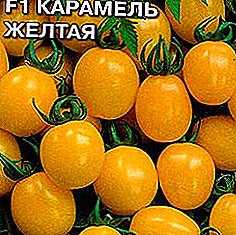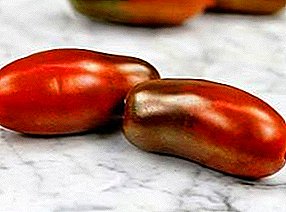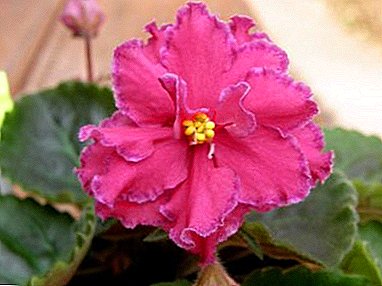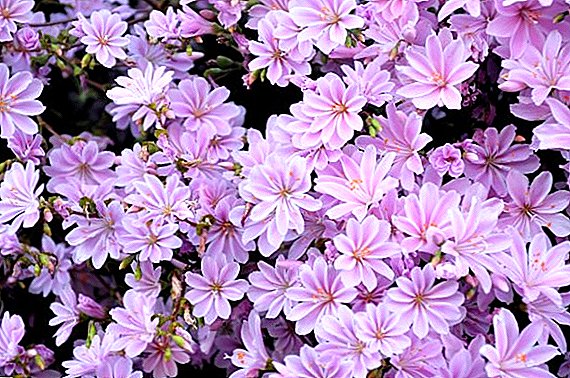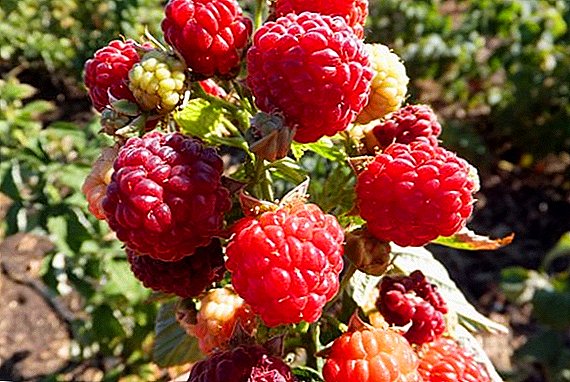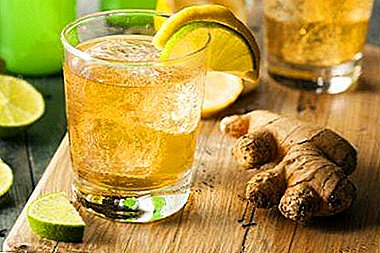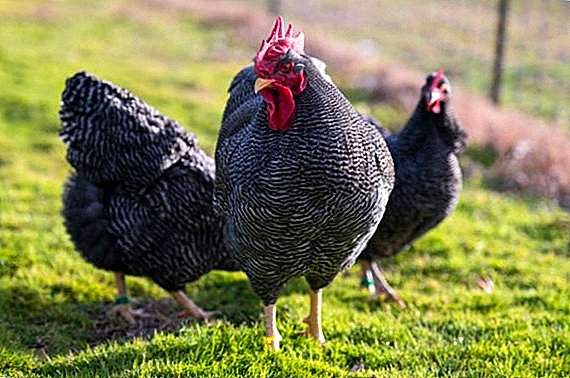 There are a large number of breeds of chickens of various directions, which are used for both domestic and factory housing. Choosing a really good breed is not easy, because you need to take into account various indicators. Now we look at the breed Plymouth Chicken that meets the highest requirements. We learn about its main characteristics, productivity, and also about the conditions of detention.
There are a large number of breeds of chickens of various directions, which are used for both domestic and factory housing. Choosing a really good breed is not easy, because you need to take into account various indicators. Now we look at the breed Plymouth Chicken that meets the highest requirements. We learn about its main characteristics, productivity, and also about the conditions of detention.
History of origin
it American breedwhich was bred in the middle of the XIX century on the basis of the Dominican and Langshan hens. The first part of the name is associated with the city of Plymouth, and the second, which means the word "rock", with a strong build of birds.  Until the beginning of the 20th century, the Plymouth breed was known only across the ocean, but already in 1911 the first individuals appeared on the territory of Tsarist Russia. Since that time, on the basis of the brought bird, breeders have bred several resistant productive breeds. Plymouthrock is still used for breeding.
Until the beginning of the 20th century, the Plymouth breed was known only across the ocean, but already in 1911 the first individuals appeared on the territory of Tsarist Russia. Since that time, on the basis of the brought bird, breeders have bred several resistant productive breeds. Plymouthrock is still used for breeding. 
Description and features
This breed has a recognizable appearance and a number of characteristic features.
Appearance and physique
The head of a bird is medium in size. Comb red, straight, has from 4 to 6 regular in shape teeth. Earrings and earlobes are colored red, identical to the comb. Earrings oval. The bill is yellow-gray, not bright. The iris is orange.
The neck is straight, medium in size, completely covered with feathers. The body is rectangular, slightly elongated, wide. The back is wide, slightly raised closer to the tail. Chest deep.
The wings are small, set high. The tail is semicircular, thick, small in size. The tail plumage in color does not differ from the general color. Hips and legs well developed, muscular, strong, covered with feathers.  Evils:
Evils:
- Deformed elongated head.
- Closely set limbs.
- Beak of dark color.
- Narrow or hunched back.
Color
The following color variations exist:
- partridge;
- white;
- blue
- pale yellow
- striped;
- black;
- silver;
- colombian








The most common bird with a certain pattern of plumage. Roosters always have light feathers, therefore they stand out against the background of chickens not only in size, but also in color. The down has no pattern, is painted in the same shade as the main plumage.
Character
Chickens do not differ timidity or aggressiveness. Quickly get used to the owner and his home, so during the next feeding behave calmly. Well withstand transportation, as well as stressful conditions. Have a stable psyche.
Hatching instinct
Another big plus breed - the presence of a developed maternal instinct. Chickens hatch eggs well, after hatching chickens protect them from the "neighbors", as well as learn to look for food.  While incubating chickens try not to leave the nest, which allows you to get the optimal number of young animals without using an incubator.
While incubating chickens try not to leave the nest, which allows you to get the optimal number of young animals without using an incubator.
Important! 96% of the young hatched is viable, and the hatchability of chickens is 75-80%.
Performance Indicators
Consider the main indicators of productivity meat and egg breed chickens.
Egg production and when they begin to rush
Since the American breed is described as meat-egg, one should not expect a record quantity of products from one of these species. However, the egg-laying indices are rather large, which makes it possible to breed chickens for the production of this particular product.
Egg production varies by source from 160 to 200 eggs per year. But even with minimal productivity, on average one hen carries 13 eggs per month, which is already a pretty good indicator. The average weight of one egg is 60 g.  Young chickens start rushing at the age of 6-7 months, however the period of the beginning depends not only on the breed itself, but also on the diet, as well as the health of the bird.
Young chickens start rushing at the age of 6-7 months, however the period of the beginning depends not only on the breed itself, but also on the diet, as well as the health of the bird.
The breeds of amrox, maran, legbar, lakenfelder, bielefelder, welsumer, austlororp, Kyrgyz gray, Russian crested, Pushkin, Kuban red, black Pantsirevskaya, Kotlyarevskaya are good indicators of egg production and meat productivity.
Precocity and taste of meat
The maximum weight of roosters is 4.5 kg, hens - 3 kg. Individuals are considered mature at 5-6 months of age. After this, the mass gain is significantly reduced or stopped.
The quality of meat is very high, so this breed is most often bred for slaughter, and not for eggs. At the same time there is an opinion that the best meat comes from a bird with white plumage.
Did you know? The hen's organism spends about a day on the formation of an egg, therefore physiologically the bird cannot rush more often.
Conditions of detention
Next, you will learn what conditions are necessary for the Plymouth rock to feel good.
Requirements for the room
For chickens is not only important a large spacious room, but the absence of any obstacles, about which they may be injured. In the house should not be high perches, as well as additional partitions.  The floor in the hen house should not be "bare", even if it is lined with wood or particleboard. Peat is the best option for bedding, but in its absence it can be covered with straw or hay. In this case, the litter should be changed regularly so that it does not get wet and does not become an environment for the development of pathogenic bacteria.
The floor in the hen house should not be "bare", even if it is lined with wood or particleboard. Peat is the best option for bedding, but in its absence it can be covered with straw or hay. In this case, the litter should be changed regularly so that it does not get wet and does not become an environment for the development of pathogenic bacteria.
Familiarize yourself with tips on choosing and buying a chicken coop, as well as making and arranging the house with your own hands (perches, nests, feeders and drinkers).
Also do not forget about the ventilation of the room and the right lighting. Ventilation is required to control humidity as well as air quality. Chicken feces emit ammonia, which can harm the respiratory system of the bird, as well as reduce immunity. Conventional incandescent bulbs that give a warm yellow light are installed in the chicken coop. In the cold season, daylight hours should be at least 11 hours a day.
As for the temperature in the hen house, the bird does not need additional heating. Even in the cold season it is enough to warm the room, as well as to seal all the holes to eliminate drafts. The bird of this breed does not like too high a temperature, which is worth remembering. 
Courtyard for walking
Plymouthrock requires walking in the warm season. At this time, the bird not only receives the necessary load for muscles and joints, but also absorbs solar ultraviolet, which positively affects its immune system.
The courtyard must be fenced with material that does not harm chickens. If there are birds of prey in your area (golden eagle, peregrine falcon, etc.), then the courtyard should be covered with a net or other light transmitting material. Birds of prey will not only reduce livestock, but also cause an outbreak of a disease.
Important! If the yard is cemented, it is imperative to lay out litter.
Also note that in spring, summer and in the first half of autumn chickens on the run not only frolic, but also eat grass. This reduces the cost of feed, and also allows the bird to get the necessary amount of greenery. If there is no grass on the plot, you should definitely put freshly mown there.
How to endure winter cold
Plymouthrock have a good immunity, but during severe frosts they cannot be released from the hen house. The bird's plumage is able to withstand frost, however, the comb and earrings that are not covered with feathers or down can simply freeze at temperatures below -5 ° C. For this reason, in winter, the bird should not be taken out for walking.
Learn more about the winter maintenance of chickens and build a chicken coop for the winter with your own hands.
Cold tolerance directly depends on the health of the bird, so it is important to prevent deterioration of immunity from the middle to the end of autumn.  Separately worth remembering seasonal moult. The fact is that at the end of autumn the bird renews the feather cover. At this time, it is important to ensure a good diet, as well as reduce the duration of daylight hours. During the molting chickens are very badly carried, which has nothing to do with the deterioration of health.
Separately worth remembering seasonal moult. The fact is that at the end of autumn the bird renews the feather cover. At this time, it is important to ensure a good diet, as well as reduce the duration of daylight hours. During the molting chickens are very badly carried, which has nothing to do with the deterioration of health.
Peculiarities of chick keeping
In the first week of life, immature, just hatched chickens should be kept sterile. For this reason, the room must be disinfected and cleaned thoroughly every day.
Did you know? The daily chicken demonstrates a set of skills and reflexes that are formed in a human child only by the age of three.
The air temperature in the room in which the young are kept should be at 30 ° C. From one month of age it can be reduced to 20-22 ° C. Reduction is made gradually. Every week, reduce by 2 degrees.
Equally important is the humidity in the room. It should be not lower than 50% and not higher than 60%. Higher humidity will cause fungal diseases, and lower humidity will lead to drying out of mucous membranes and additional water consumption.
What to feed
Now we learn about the diet and food preferences of adult chickens and young.
Chickens
Chickens in the first week of life should be fed in a certain way: food is given in 6-7 doses in small portions, which the young eats in 5-10 minutes. This will help develop the necessary habit, and will also stimulate the appetite.  Residues should be removed immediately so that dangerous microorganisms do not reproduce in them. Dishes need to be washed. It is advisable to take out empty containers from the hen house so that after the next cleaning they will not be contaminated.
Residues should be removed immediately so that dangerous microorganisms do not reproduce in them. Dishes need to be washed. It is advisable to take out empty containers from the hen house so that after the next cleaning they will not be contaminated.
Important! The first feeding is mandatory no later than 12 hours after hatching.
When feeding chickens, you need to carefully monitor the diet:
- There are 2 variants of starter feed for young stock: ground boiled egg yolk and boiled corn grits. The second option is preferable, because the yolk contains too much fat, which can provoke dysfunction of the digestive system of small chickens.
- In the second week of life, you can give a mixture of semolina and egg yolk. This option is not capable of harming chickens. A good addition to the diet is boiled potatoes and carrots, which are given in small quantities.
- At the age of one month, the birds are given freshly cut grass, as well as coarse grains. At the same time, vegetables and root vegetables are not excluded from the daily menu, so that you do not have to make additional vitamin and mineral supplements in large volumes.
- At the age of one and a half months, the bird is transferred to grain or give balanced feed.
 If some individuals are lagging behind or have poor immunity, they are additionally given fish oil, glucose syrup, as well as homemade dairy products.
If some individuals are lagging behind or have poor immunity, they are additionally given fish oil, glucose syrup, as well as homemade dairy products.
Adult chickens
The diet of an adult bird consists of the following:
- wet mash, which includes cereals, boiled vegetables, and not too fatty broth;
- whole grains;
- grass (in the warm season);
- combined feed (barley, corn, wheat, vitamin and mineral supplements).
Learn more about feeding chickens: the rate of feed for laying hens per day, preparing food at home.
Blend is given once a day. In the cold season, such food in the form of heat will be most useful. Whole grains should be available around the clock in acceptable quantities. Compound feeds are an additive, but not the main feed, therefore they are given on average.  In the cold season, the amount of feed is increased by 10-20% to cover the cost of maintaining optimal body temperature. In winter, all animals consume more food, chickens are no exception. Also in winter you should worry about the availability of sufficient amounts of minerals and vitamins in the feed. If you do not use complete feed, be sure to include in the diet of grass and pine flour, chalk, as well as fortified complexes.
In the cold season, the amount of feed is increased by 10-20% to cover the cost of maintaining optimal body temperature. In winter, all animals consume more food, chickens are no exception. Also in winter you should worry about the availability of sufficient amounts of minerals and vitamins in the feed. If you do not use complete feed, be sure to include in the diet of grass and pine flour, chalk, as well as fortified complexes.
Important! Watch for the number of fed corn and sunflower seeds, as this food causes obesity in poultry.
Advantages and disadvantages
The breed Plymouth brook has long gained popularity among poultry farmers in different countries, however, among its characteristics, it is possible to distinguish negative ones.
Pros:
- good egg production compared to other meat and egg breeds;
- good immunity;
- lack of high requirements for food and premises;
- excellent meat quality;
- balanced character;
- quick weight gain
Minuses:
- high cost of young stock;
- chickens slowly acquire a full-fledged plumage;
- Feed quality directly affects egg production and meat taste.
Video: breed of chickens Plymouth
Poultry farmers reviews about the Plymouth breed


Plymouthrock is a good undemanding breed, for which there is no need to create "greenhouse" conditions. Chickens withstand our climate, do not differ in aggression or the presence of characteristic diseases, therefore, they are great for small farms.


